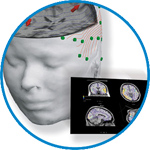- Home
- About ANT
-
Products

asa
asa is a highly flexible EEG/ERP and MEG analysis package with a variety of source reconstruction, signal analysis and MRI processing features.
.jpg)
eego mylab
The new frontier in multimodal brain research. With up to 16 kHz sampling rate, 256 EEG channels and unique software features, eego mylab gives you an unprecedented in-depth understanding of the human brain.

eego sports
eego sports offers complete freedom to collect high-density EEG data, bipolar EMG signals, and a variety of physiological sensor data, wherever and whenever required, with publish quality data in less than 15 minutes!

waveguard net
The waveguard net sets a new standard for research applications requiring high-density EEG data acquisition with quick preparation time, high flexibility, and subject comfort.

visor2
Our new and upgraded visor2 solutions integrate all the latest technologies for navigated rTMS, dual-coil navigation support, EEG-TMS recordings and pre-surgical evaluation for the highest quality in research and clinical procedures.

powerMAG ANT
The PowerMAG ANT 100 rTMS stimulator is designed for the specific needs of high-end TMS applications. Powerful high-frequency TMS as well as high precise single pulse and repetitive pulse protocols are combined in one single device.

xensor
xensor offers the solution for digitization of 3D electrode positions. xensor takes care of the whole procedure; it records, visualizes and stores positions acquired with a dedicated digitizer.

waveguard original
waveguard original is the cap solution for EEG measurements compatible with fMRI, MEG and TMS system. Use of active shielding guarantees performance in even the most demanding environments.

waveguard connect
waveguard connect EEG caps are a perfect match for hospitals and institutes aiming at reliable EEG, maximum uptime and great patient comfort! For optimal signal quality, the electrodes are made of pure, solid tin.

waveguard touch
waveguard touch is a dry electrode EEG cap. The unique Ag/AgCl coated soft polymer electrodes provide stable, research-grade EEG signals while maintaining subject comfort. The combination of these innovative dry electrodes and the industry-leading waveguard cap makes waveguard touch the best solution for dry EEG.

smartmove
smartmove allows planning of a complete TMS session ahead by defining stimulation sites based on anatomical MRI information and functional information like fMRI, PET or EEG/MEG.
Stay - References
- Support
- Events
- News
- Contact Us
You are here
Offline continuous theta burst stimulation over right inferior frontal gyrus and pre-supplementary motor area impairs inhibition during a go/no-go task
Offline continuous theta burst stimulation over right inferior frontal gyrus and pre-supplementary motor area impairs inhibition during a go/no-go task
In a typical go/no-go task a single imperative stimulus is presented each trial, either a go or no-go stimulus. Participants are instructed to initiate a known response upon appearance of the go-signal and withhold the response if the no-go signal is presented. It is unclear whether the go-response is prepared in advance of the imperative stimulus in a go/no-go task. Moreover, it is unclear if inhibitory control processes suppress preparatory go-activation. The purpose of the present experiment was 1) to determine whether the go-response is prepared in advance of stimulus identification with the use of a startling acoustic stimulus (SAS), and 2) investigate the inhibitory role of the right inferior frontal gyrus (rIFG) and pre-supplementary motor area (preSMA) during the performance of a go/no-go task with the use of continuous theta burst stimulation (cTBS). The experiment consisted of three phases; a pre-cTBS phase in which participants completed a go/no-go and simple-RT task, followed by offline cTBS to temporarily deactivate either rIFG or preSMA (with a sham control), then a post-cTBS phase which was identical to the pre-cTBS phase. Results revealed that stimulation to both cortical sites impaired participants’ ability to withhold movements during no-go trials. Notably, rIFG or preSMA stimulation did not affect the latency of voluntary go-responses and did not enable the SAS to involuntarily trigger responses. These findings suggest that preparation and initiation of the go-response occurs after the imperative stimulus, with the rIFG and preSMA involved in inhibiting the go-response once the stimulus is identified as a no-go signal.

 Read more
Read more.jpg)




